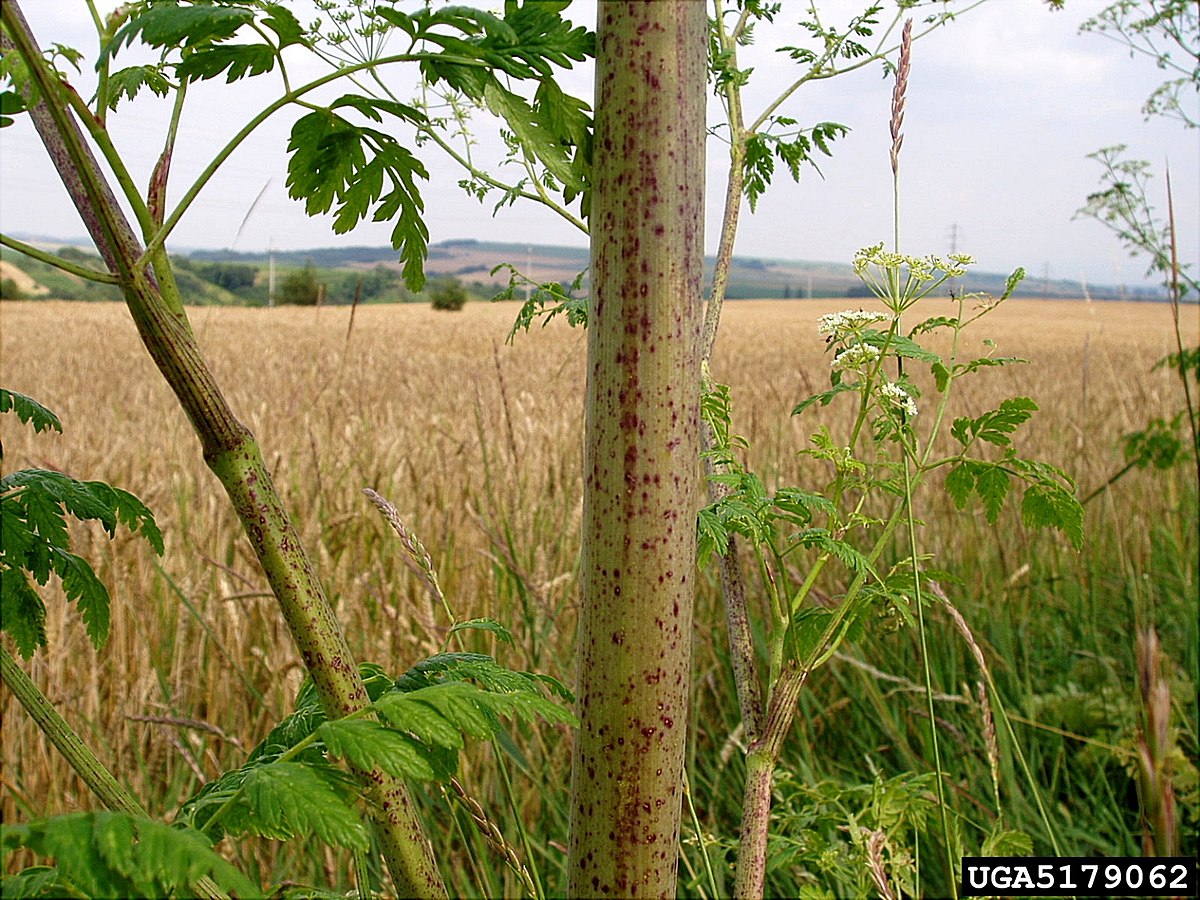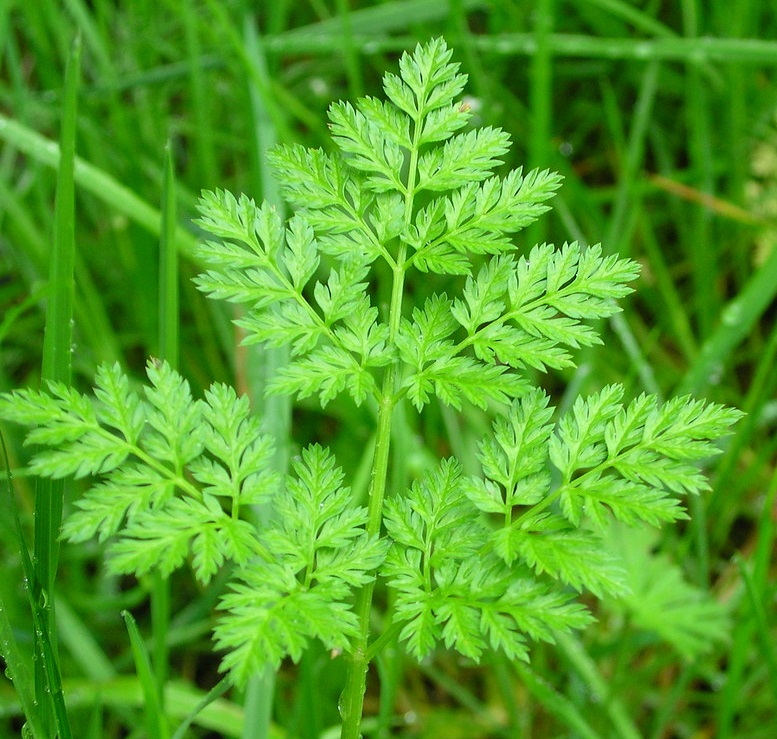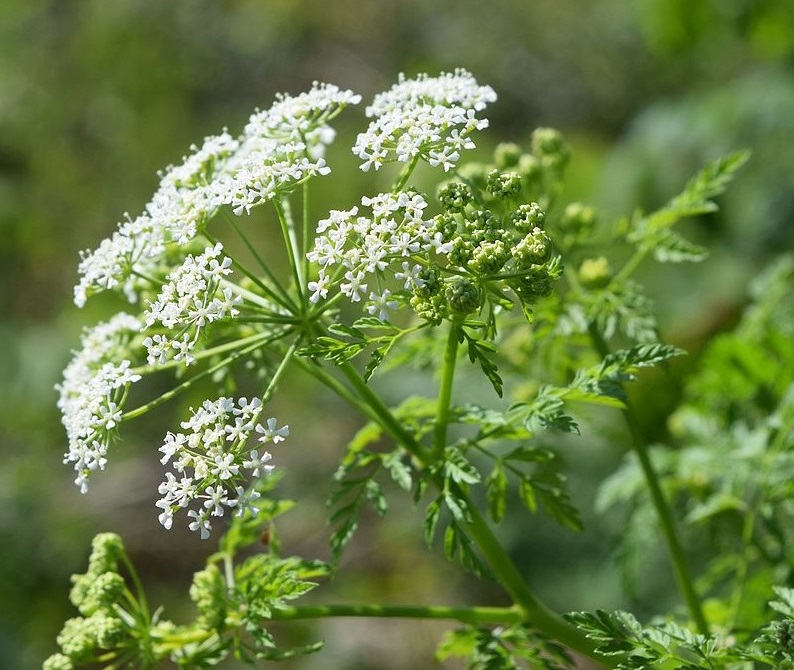Poison Hemlock

Poison Hemlock
(Conium masculatum )
Priority: - Eradicate
Tags: Terrestrial | Toxic
Identification and Reproduction
Identification:
- Poison hemlock is a toxic biennial in the Apiaceae family (carrot).
- Puts off an unpleasant odor when crushed.
- This plant typically grows between 1 to 3 m tall.
- Hollow stems are green with purple reddish blotches and are hairless.
- Leaves are light green, triangular and fern-like.
- Flowers are small and clustered in an umbrella-shaped head.
Reproduction:
- Poison hemlock reproduces by seed.
- A single plant can produce 40,000 seeds that will remian viable for up to 6 years.
- Seeds are easily transported by machinery, animals, water movement and humans.
Habitat & Ecology
- Thrives in moist soils in sunny locations.
- Commonly found along ditches, road sides, fields and disturbed areas.
Impacts
Social:
Poison-hemlock is toxic and all parts of the plant are poisonous. Poses as a risk to both people and animals. If you suspect someone has eaten poison hemlock, call the BC Poison Control Centre immediately (1-800-567-8911).
- Dead canes can remain toxic for up to 3 years.
- Can cause severe skin irritation and issues to the respiratory system.
- Out completes native forage species and will be hazardous to livestock.
- Often confused with edible plants in the carrot family.
Management
When performing any control treatment to poison hemlock, minimize skin exposure; wear gloves, safety glasses and long sleeves. Wash hands, tools and clothes thoroughly after handling poison hemlock.
Mechanical/Manual Control:
- For small infestations hand pulling or digging up the plants is effective. Be sure to remove the entire root system.
- If plant roots are too large to remove cut at least 3 cm below ground.
- Manual removal is best done prior to flowering to reduce seeds being left on site.
- Use and apply a layer of mulch to suppress new growth after removing plants.
- Mowing is not recommended as this can lead to respiratory problems by breathing in the toxins.
- Do not compost this plant. Place removed plant fragments in a bag for disposal.
Resources
For further details on Poison Hemlock control please refer to the Metro Vancouver Best Management Practices for Poison Hemlock (pg. 12-21)
Download the Capital Region Invasive Species Program's Alert Sheet on Poison Hemlock here.
Download A Guide to Weeds in British Columbia for Poison Hemlock here.
Sometimes confused with giant hogweed. Please check out Maine's Department of Agriculture, Conservation and Forestry's resource guide comparing look-alike species here.
Download the Metro Vancouver Factsheet on Poison Hemlock here.
Download the King County Noxious Weed Alert's Factsheet on Poison Hemlock here. Please note this a US resource and Canadian guidelines and regulations may differ. Be sure to carefully read all labels before use.
Header photo (Françoise Caclin).





